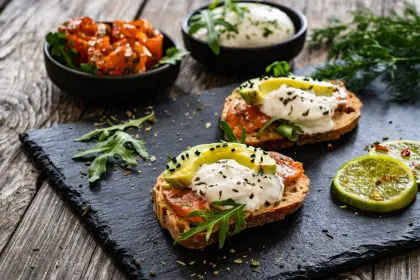Recent dating statistics reveal that while 40% of couples now meet online, in-person connections lead to longer-lasting relationships. Studies show that couples who meet at social events have a 25% higher chance of long-term compatibility compared to other meeting methods. Understanding how to navigate these opportunities effectively can dramatically improve your chances of finding the right partner.
The psychology of event networking
Before diving into specific strategies, understanding the psychology behind successful connections is crucial:
Mental preparation:
- Develop positive mindset
- Set realistic expectations
- Focus on genuine connections
- Release perfectionist tendencies
- Practice self-compassion
- Maintain emotional balance
- Build social confidence
Research shows that individuals who approach events with positive expectations are three times more likely to make meaningful connections.
1. Selecting high-value events
Strategic event choice
Not all events are created equal. Research indicates that certain venues and occasions attract more relationship-minded individuals:
Premium networking opportunities:
- Charity galas (85% professional attendance)
- Industry conferences (70% educated professionals)
- Cultural festivals (diverse, educated crowd)
- Educational workshops (shared interests)
- Alumni gatherings (verified backgrounds)
- Professional mixers (career-focused individuals)
- Community service events (value-driven people)
Event evaluation criteria:
- Attendee demographics
- Professional level
- Value alignment
- Social atmosphere
- Networking potential
- Regular occurrence
- Location quality
Common mistakes to avoid:
- Choosing purely social events
- Attending wrong time slots
- Ignoring event reviews
- Missing regular gatherings
- Selecting inconvenient locations
- Overlooking dress codes
- Skipping preparation
2. Mastering authentic networking
Conversation mastery
Expert communicators suggest specific approaches for meaningful dialogue:
Opening lines that work:
- “What brings you to this event?”
- “I loved the speaker’s point about…”
- “Have you attended these events before?”
- “What’s your take on [event topic]?”
- “I noticed your interesting [accessory/item]”
Conversation deepening techniques:
- Practice active listening
- Use open-ended questions
- Share relevant experiences
- Show genuine curiosity
- Reference earlier points
- Add valuable insights
- Create connection points
Body language tips:
- Maintain open posture
- Use appropriate eye contact
- Mirror conversation partner
- Show engaged expressions
- Keep natural hand movements
- Position strategically
- Project confidence
3. Presentation and energy management
Creating magnetic presence
Research shows first impressions form within 7 seconds:
Wardrobe strategy:
- Investment pieces:
- Quality blazer or jacket
- Well-fitted basics
- Signature accessories
- Professional shoes
- Classic timepiece
- Quality handbag
- Subtle jewelry
Color psychology:
- Blue: Trust and stability
- Black: Sophistication
- Red: Confidence (in moderation)
- White: Freshness and clarity
- Navy: Professional reliability
- Purple: Creative intelligence
- Green: Growth and balance
Energy management:
- Arrive fresh and energized
- Take strategic breaks
- Maintain hydration
- Monitor caffeine intake
- Practice power poses
- Use breathing techniques
- Schedule recovery time
4. Solo attendance mastery
Independent networking
Studies show solo attendees make 40% more connections:
Preparation techniques:
- Research attendee lists
- Study event agenda
- Plan conversation topics
- Set specific goals
- Create backup plans
- Arrange transportation
- Schedule follow-ups
Confidence building:
- Arrive early to acclimate
- Meet organizers first
- Start with small groups
- Use natural transitions
- Take strategic breaks
- Practice self-assurance
- Build momentum gradually
Safety considerations:
- Share location with friends
- Schedule check-ins
- Know exit routes
- Trust instincts
- Keep transportation options
- Maintain awareness
- Have backup plans
5. Professional follow-up strategies
Building lasting connections
Research shows 80% of lasting relationships require multiple interactions:
Timeline strategy:
- Within 24 hours:
- Send connection request
- Reference specific conversation
- Express genuine appreciation
- Mention future events
- Share relevant resource
- Make specific plans
- Keep tone professional
Digital presence optimization:
- Professional photos
- Updated profiles
- Engaging content
- Regular activity
- Quality connections
- Thoughtful interactions
- Personal brand development
Red and green flags
Quality indicators
Watch for these signals:
Green flags:
- Consistent communication
- Professional achievement
- Emotional intelligence
- Social awareness
- Genuine interest
- Clear goals
- Value alignment
Red flags:
- Excessive drinking
- Dismissive behavior
- Relationship bombing
- Status obsession
- Boundary pushing
- Inconsistency
- Disrespectful attitudes
Long-term success strategies
Success metrics to track:
- Quality conversations
- Follow-up success
- Relationship development
- Personal growth
- Network expansion
- Goal alignment
- Value matching
Implementation timeline:
- Month 1: Event selection
- Month 2: Networking skills
- Month 3: Follow-up mastery
- Month 4: Relationship building
- Month 5: Quality assessment
- Month 6: Strategy refinement
Moving forward
Remember that finding the right partner combines strategy with authenticity. Research shows successful couples often meet through:
- Shared interests (40%)
- Professional networks (30%)
- Social events (20%)
- Common connections (10%)
Focus on consistent growth:
- Develop genuine connections
- Maintain professional presence
- Build quality networks
- Practice patience
- Trust the process
- Stay authentic
- Remain selective
This story was created using AI technology.










